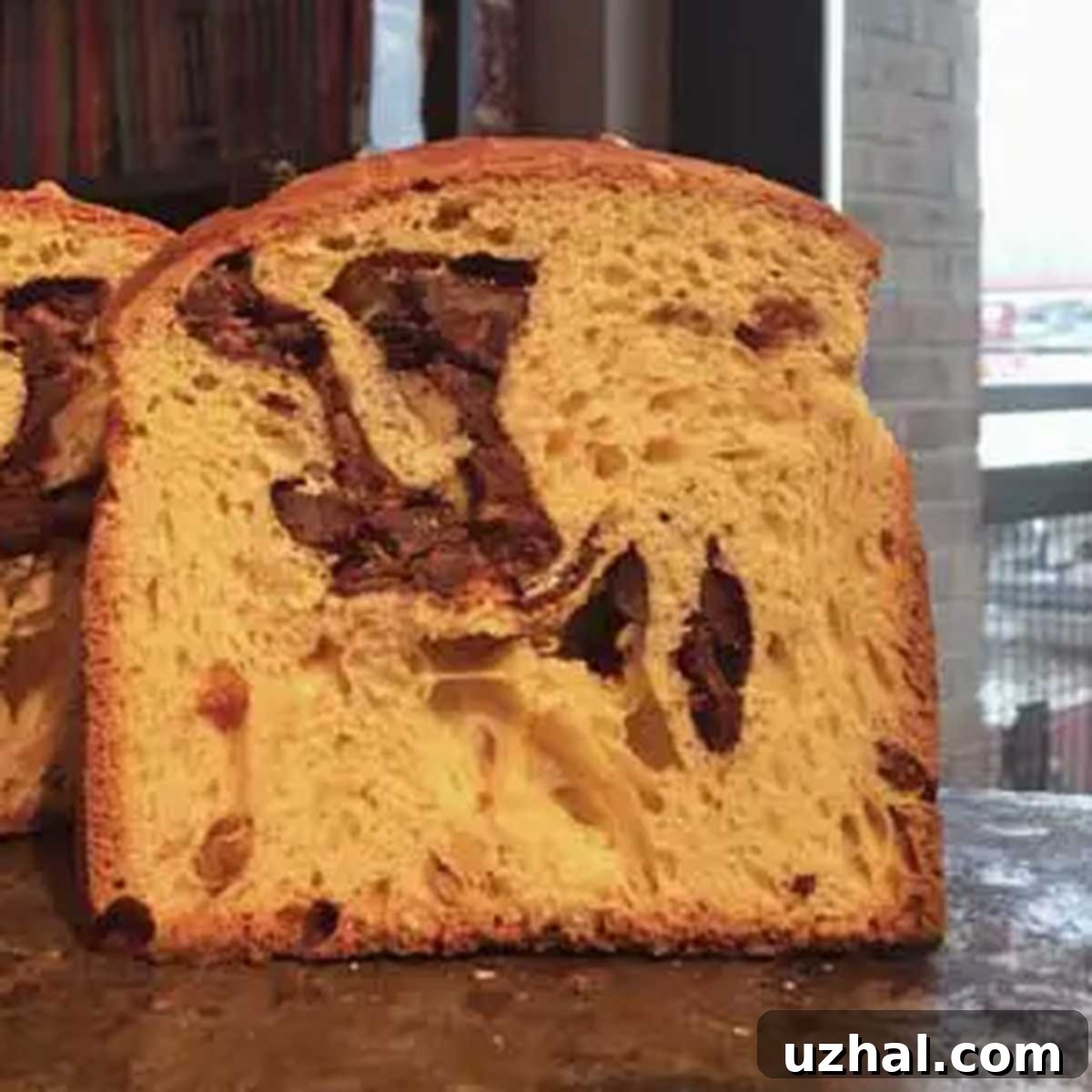Baking Traditional Kulich: A Delightful Journey into Russian Easter Bread
My culinary adventures often begin in unexpected places, and this particular journey into the world of traditional Eastern European baking started with a simple request on a neighborhood bulletin board. Someone was looking for used coffee cans to bake her family’s holiday Kulich. While I was familiar with the concept of baking bread in cans, the term “Kulich” was new to me. My curiosity was immediately piqued, prompting me to dive into some research. I soon discovered that Kulich is a revered Russian and Ukrainian yeast bread, traditionally baked to mark the joyous occasion of Easter and to break the Lenten fast. This isn’t just any bread; it’s a profound symbol of atonement and rebirth, its distinctive tall, cylindrical shape carrying deep religious meanings. The more I learned about this interesting and culturally significant bread, the more I found myself utterly engrossed, soon obsessing over the perfect can sizes and molds, determined to create my own.
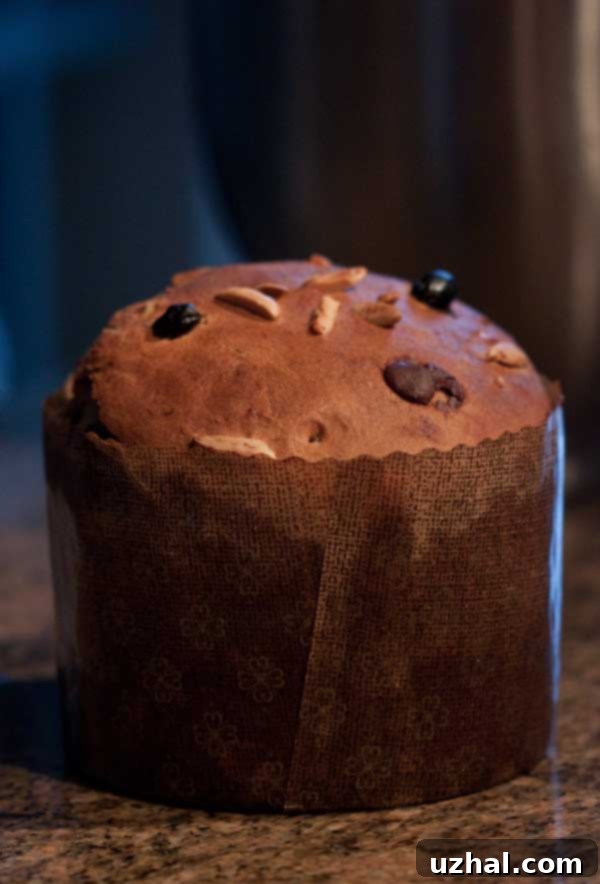
What is Kulich? Exploring its Rich Flavor Profile and Cultural Significance
Kulich shares a lineage with other beloved enriched breads such as Italian panettone, Polish babka, and French brioche, yet it possesses a distinct character all its own. What sets Kulich apart is its remarkably high proportion of butter and eggs, which contribute to a texture that is both wonderfully rich and surprisingly light. It’s a versatile treat, tasting equally delicious at room temperature or gently warmed, perhaps in a toaster or oven. The traditional flavor palette for Kulich is truly enchanting, often featuring aromatic spices like warm cardamom, exotic saffron, and bright citrus notes. Beyond these core spices, a variety of add-ins further enhance its appeal. Common additions include sweet candied orange peel (or vibrant orange zest), plump raisins often steeped in vodka or rum for an extra layer of flavor, crunchy toasted almonds, and decadent chocolate chunks. Much like its cousin babka, Kulich offers a delightful array of flavor combinations, allowing for both traditional purity and creative experimentation.
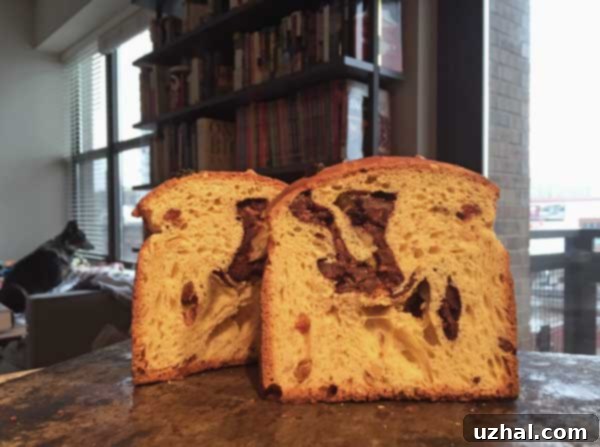
My First Kulich Baking Experience: The Four Egg Yolk Recipe
For my inaugural Kulich attempt, I selected an intriguing recipe that initially called for a generous eight egg yolks, with two stiffly beaten egg whites later folded into the dough. The original recipe yielded two large loaves, but for my first foray, I decided to halve it. This pragmatic decision helped me manage the quantity of ingredients, especially the yolks, and allowed me to gauge the results before committing to a full batch. I was also somewhat uncertain about the specific blend of spices in this recipe: orange, cardamom, and vanilla. Cardamom, while essential to many European baked goods, isn’t always my personal favorite, but I was determined to embrace the authentic European flavor profile this recipe promised. For the add-ins, I opted for a combination of rum-soaked golden raisins, rich chocolate chunks, and slivered almonds, aiming for a classic yet comforting taste.
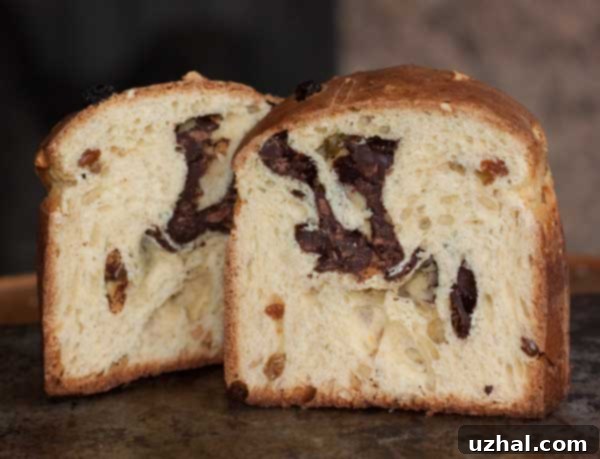
One minor hurdle I encountered was finding candied orange or “citron.” It typically graces grocery store shelves from October to February, after which it’s usually relegated to clearance racks, making it elusive in late spring. Resourcefully, I decided that fresh orange zest would provide a wonderfully bright citrus note, serving as an excellent substitute. This small adaptation proved to be quite successful.
Choosing the Right Baking Mold: Panettone vs. Coffee Cans
I’ve now had the pleasure of baking this Kulich recipe twice, each time experimenting with different baking vessels to achieve varied results. The first time, I used a dedicated panettone mold, which is designed to produce a beautifully tall, round loaf with characteristic straight sides. For my second attempt, I aimed for smaller, more manageable loaves and repurposed two 29 oz pumpkin cans, meticulously lined with parchment paper. Both methods yielded excellent results, demonstrating the versatility of Kulich dough when it comes to shaping. The panettone mold offered a more traditional, elegant appearance, while the cans produced charmingly stumpier yet equally delightful individual loaves.
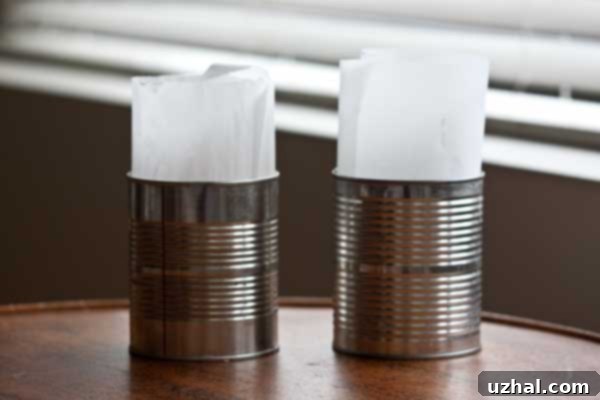
The Icing Dilemma: Traditional or Simplified?
Traditionally, Kulich is adorned with a decorative icing, often topped with sprinkles or glazed fruits, adding to its festive appearance. However, for both of my batches, I chose to omit the icing. My reasoning was twofold: first, the chocolate chunks I had incorporated already provided ample sweetness. Second, I have a personal preference for warming these types of rich breads in the toaster before serving, and icing tends to become messy when heated. While I genuinely appreciate a good icing, I didn’t find myself missing it at all with this particular Kulich. That said, if you’re aiming for a fully traditional presentation or simply love a sweet glaze, it’s definitely an element you might want to add to your homemade Kulich.
Observing the Results: Texture, Color, and the Role of Egg Whites
With our freezer now happily stocked with several Kulich loaves, I eagerly anticipate conducting a taste test with a Russian friend to get an authentic perspective. My initial observations are highly positive. The chosen blend of spices—cardamom, vanilla, and orange zest—infused the bread with a wonderfully pleasant and aromatic flavor that was both comforting and subtly exotic. The generous use of egg yolks imparted a beautiful, slightly yellow hue to the crumb, making it visually appealing, and contributed to a slightly stiffer yet tender texture. The inclusion of beaten egg whites, folded into the dough, is an interesting technique. I recalled Bernard Clayton using a similar method in his French bread recipes. While I’m not entirely certain of the precise scientific effect, I hypothesize that the beaten egg whites help to introduce more air into the dough, potentially increasing volume and creating more delicate air pockets during the baking process, resulting in a lighter final product. This unique touch certainly contributed to the bread’s satisfying chew and delightful mouthfeel.
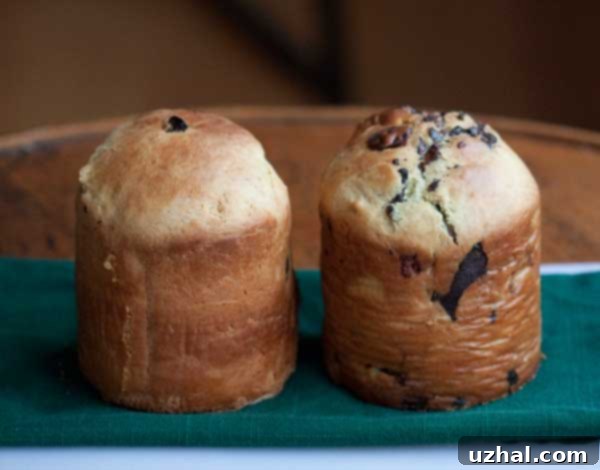
Your Turn to Bake: My Adaptable Kulich Recipe
Baking Kulich is a labor of love, a rewarding process that requires time and patience. Given the commitment involved, some may prefer to tackle the full original recipe from the link I referenced earlier. However, if you’re looking for an excellent starting point, perhaps with a more manageable number of egg yolks (just four in this version) and an appealing, slightly different blend of spices, then my adapted recipe is perfect for you. This version provides a wonderful balance of traditional flavor with a straightforward approach, making it accessible for home bakers. I’ve designed it to be both flavorful and forgiving, ensuring a successful and delicious Kulich for your Easter table or any special occasion.
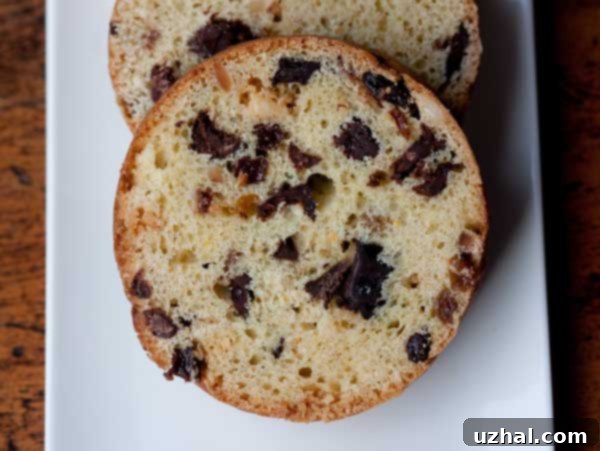
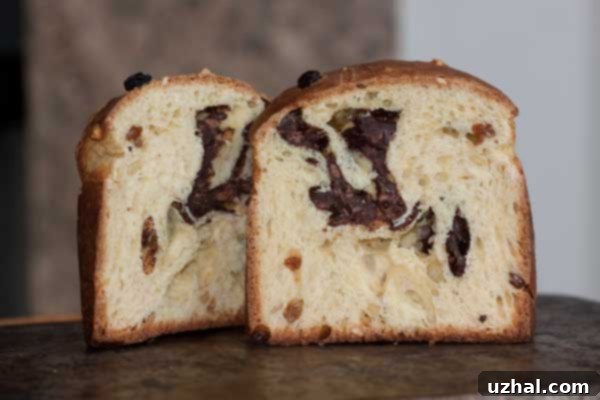
Serving and Storing Your Homemade Kulich
Once your beautiful Kulich has cooled completely, it’s ready to be enjoyed. Slice it into thick rounds or wedges and serve it simply on its own, perhaps with a cup of tea or coffee. It’s also delicious alongside a spread of fruit preserves or a dollop of sweetened cream cheese. For storage, Kulich keeps well at room temperature for a few days if tightly wrapped to prevent it from drying out. For longer preservation, it freezes exceptionally well. Simply wrap individual loaves or slices tightly in plastic wrap, then again in aluminum foil, and store in the freezer for up to a month. Thaw at room temperature or gently warm in a low oven or toaster for that freshly baked experience.
- Russian Black Bread
- Cooking Light White Russian Tiramisu
- Mexican Wedding Cakes
- Coconut Sugar Biscotti Thins
- Cherry Cheesecake Pie
Recipe: My Adapted Russian Kulich
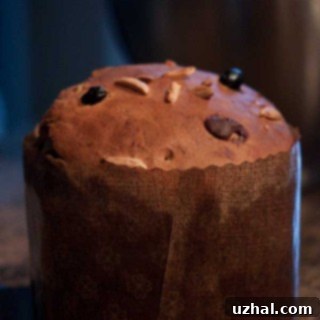
Russian Kulich
Cookie Madness
Pin Recipe
Ingredients
Yeast Sponge
- ¼ cup warm milk
- 2 tablespoons warm water
- 2 tablespoons sugar
- 1 ⅛ teaspoons active dry yeast
- ½ cup all-purpose flour (70 grams)
Dough:
- 1 large egg white
- 4 tablespoons unsalted butter, softened
- ¼ cup sugar
- 4 large egg yolks
- ½ teaspoon salt
- 1 teaspoon vanilla extract
- ½ teaspoon cardamom (adjust to taste)
- 1 ½ to 1 ¾ cups all-purpose flour (210 grams)
Add-Ins
- 1 teaspoon orange zest
- ⅓ cup golden raisins soaked in rum (ensure they are well-drained)
- ¼ cup slivered almonds
- ½ cup chocolate chips
Optional Glaze:
- 1 cup confectioners’ sugar
- ⅛ teaspoon almond extract or vanilla extract
- 1 tablespoon warm water (add more if needed for desired consistency)
Instructions
-
In a large glass measuring cup or bowl, combine the warm milk and water. Heat in the microwave briefly until the liquid is hot. Allow it to cool to a temperature between 110 and 115 degrees F (43-46 degrees C), then stir in 2 tablespoons of the sugar and the active dry yeast. Mix well until yeast is dissolved. Next, stir in ½ cup of the all-purpose flour. Cover the bowl loosely with plastic wrap and let this yeast sponge stand in a warm place for 1 hour until foamy and active.
-
While the sponge is proofing, whip the large egg white in a separate, clean bowl until soft peaks form. Set aside carefully.
-
In the bowl of a stand mixer fitted with the paddle attachment, beat the softened unsalted butter and the remaining ¼ cup of sugar until the mixture is light and creamy. Then, beat in the 4 large egg yolks one at a time, ensuring they are well blended into the butter mixture after each addition.
-
To the butter and egg yolk mixture, beat in the salt, vanilla extract, cardamom (adjusting amount to your preference), and fresh orange zest. Once thoroughly combined, add the prepared flour/yeast sponge mixture. Mix until just incorporated.
-
Gradually add the remaining 1 ½ to 1 ¾ cups of all-purpose flour, about ½ cup at a time, mixing until a soft, shaggy dough forms. At this stage, the dough will be very sticky.
-
Gently fold the reserved beaten egg white into the dough until just combined. Be careful not to deflate the egg white completely.
-
Switch to the dough hook attachment on your stand mixer. Knead the dough on medium-low speed for approximately 5 minutes. The dough will remain very soft but should develop a slight elasticity.
-
Transfer the dough to a well-oiled large bowl, turning it once to coat. Cover the bowl loosely with plastic wrap or a clean kitchen towel and let it rise in a warm place for about 90 minutes. The dough may not quite double in size due to its richness, but it should rise substantially and become visibly puffy.
-
Gently punch down the risen dough to release the air. Add the well-drained rum-soaked raisins, chocolate chips, and slivered almonds. Fold the dough gently around the add-ins, working them in as best you can to form a cohesive ball.
-
Carefully place the ball of dough into a panettone mold (typically 5 inches in base diameter and 4 inches high). Alternatively, if you prefer smaller loaves, use two 29 oz cans, each thoroughly lined with parchment paper, which will create two stumpier but equally appealing loaves. Let the dough rise again in the mold(s) for another hour, or until it has almost reached the top edge.
-
Preheat your oven to 350°F (175°C). Place the mold(s) on a rimmed baking sheet to catch any potential overflow and for easier handling.
-
Bake the Kulich for approximately 40-45 minutes, or until the top is golden brown and a meat thermometer inserted into the center measures 205°F (96°C). If the top begins to brown too quickly, you can loosely tent it with aluminum foil. Once baked, remove from the oven and allow the Kulich to cool completely in its mold on a wire rack before attempting to slice or glaze.
-
For the Optional Glaze: In a small bowl, whisk together the confectioners’ sugar, almond or vanilla extract, and warm water until smooth and pourable. Drizzle over the cooled Kulich. You may add sprinkles or candied fruit for extra decoration if desired.
